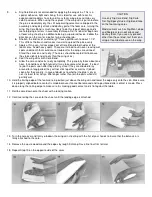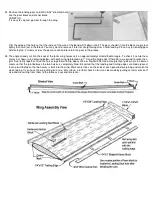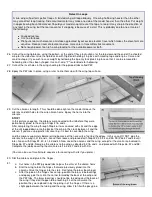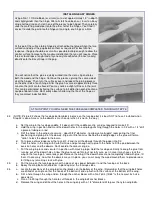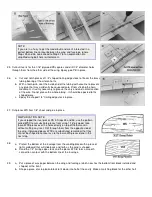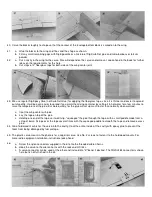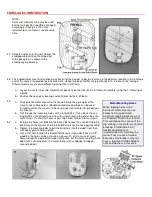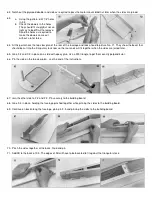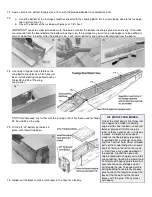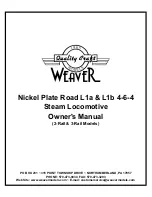
The Kougar was designed as an advanced aileron trainer for fliers who have had some flying time on an intermediate trainer
such as the Sig Komander or Sig Kavalier. While it is very maneuverable and can do difficult FAI pattern maneuvers and even
accomplish lomcevaks, the model has been carefully tailored to handle easily and not be touchy in the hands of novice fliers. A
fully symmetrical wing section provides good inverted and outside stunting characteristics.
For use as a trainer, a .40 cu. in. engine is recommended. A .45 gives faster performance and would be good for pattern
competition. One of the prototype models was powered by a .49 and the model is strong enough to handle this amount of power
though this engine size is advisable only for advanced contest or sport fliers who wish to achieve high flying speed and steep
angles of climb.
A Note About Balsa Wood
We do our best to put as good a grade of balsa in our kits as the supply situation permits. The world-wide increase in demand
for balsa has made it impossible to obtain as high an average quality as used to be the case and this situation is getting
worse.
Every piece of balsa supplied cannot be 100% perfect or kit prices would have to be greatly increased. Mineral stains or small
knots do not seriously affect wood strength. Even with the very best grades of balsa, there is a natural tendency for some
sticks or sheets to immediately bow upon being cut off from a perfectly square block because of builtin stresses. In most
cases, these can be bowed back into alignment during building. True up the edges of bowed sheet by trimming, using a metal
straight edge to cut against. Planking sheets, as used on the wing, need not be perfectly flat since they must be curved into
place anyway during construction. The gluing of the plywood doublers and stringers to the fuselage sides while they are
pinned to a flat surface should flatten out any warps in the side sheets.
Recommended Glues
The framework should be glued with Sig-Bond resin type glue. Areas subjected to unusual strain, exposed to fuel or oil, or
including metal pieces, should be epoxied with Sig Epoxy Glue or Sig Kwik-Set 5 minute type epoxy. Some specific pieces have
other recommendations. You will find these in the directions concerning the part.




